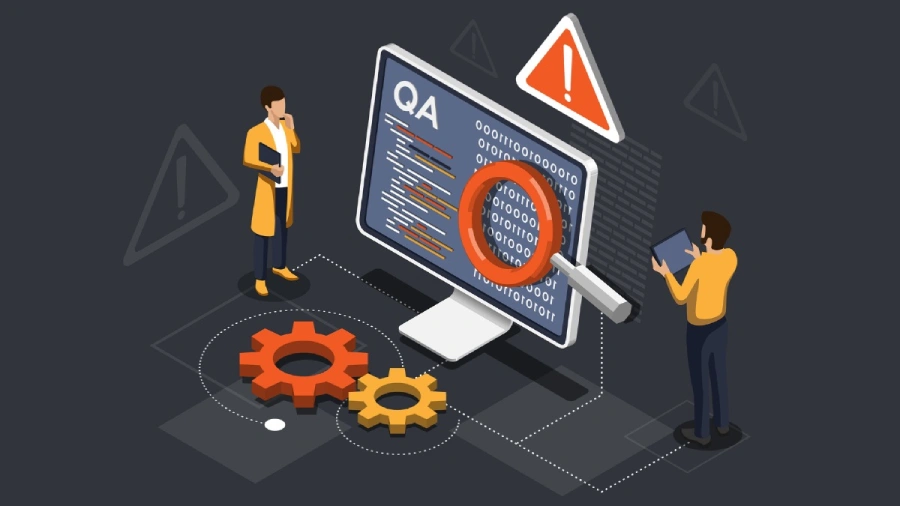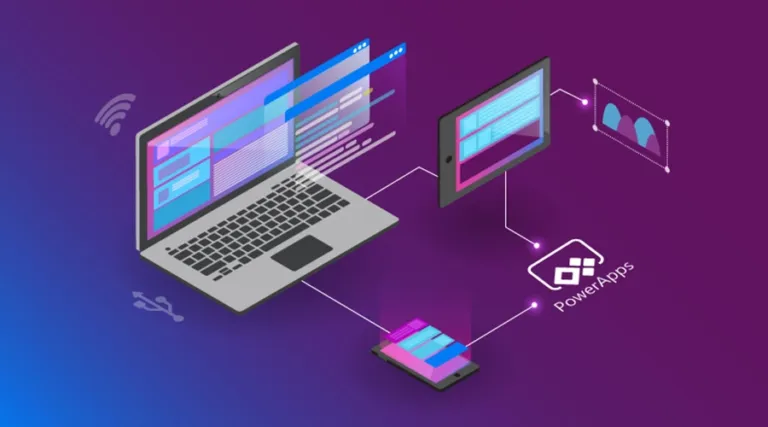Software Testing Techniques & Best Practices to Ensure Quality
Software testing is the safety net that keeps glitches and bugs from crashing the party, making sure the software works exactly as promised. In today’s fast-moving tech scene, where automation and digital transformation are stealing the spotlight, testing plays an even bigger role. It’s the backbone that supports smooth transitions, ensuring systems work seamlessly together.
But testing isn’t without its headaches—things like tight schedules, mismatched expectations, and the complexity of modern systems can throw a wrench in the works. That’s why it’s an absolute must-have for businesses aiming to stay ahead.
Table of Contents
Toggle2 Popular Software Testing Approaches
Software testing can be done in two main ways: manually or automation. Both methods have their place, depending on the goals, resources, and scope of the project. We’ll look at both techniques in more detail, highlighting their pros, cons, and where each works best.
a. Manual Testing
Manual testing is all about human testers interacting directly with the software, simulating real-world use cases to spot issues. Testers perform actions step-by-step, checking that every feature behaves as expected.

Benefits and Limitations of Manual Testing
One of the main perks of manual testing is that it offers a deep, hands-on approach. Testers can use their judgment, spot subtle usability issues, and get a feel for the user experience. It’s great for tests that require creative thinking or an understanding of how real users might interact with the system.
Manual testing also shines in cases where the application is in its early stages or when changes are too small to justify automating the tests.
However, there are some downsides. Manual testing is time-consuming and can be error-prone, especially with repetitive tasks. It’s harder to scale, so the more complex the system, the more human testers you need. Plus, once you’ve tested a feature, it’s a challenge to re-test every time there’s a change or update.
Ideal Scenarios for Manual Testing
Manual testing is the go-to choice in certain situations. It’s ideal for new applications or features that are still evolving, where the behavior is not yet stable. It’s also perfect for usability testing, where the focus is on how intuitive the software is for the user.
If the testing is only needed once or twice, the effort of automating it simply isn’t worth it. For small-scale projects or short timeframes, manual testing provides quick, actionable insights.
b. Automated Testing
On the other side, we have automated testing, where testers use tools to automatically execute test cases. These tests are scripted and repeatable, making them highly efficient for large or complex applications.
Overview of Automation Tools
Automation tools like Selenium and Appium are popular choices in the industry. Selenium is excellent for web applications, as it supports multiple browsers and programming languages. Appium, on the other hand, is great for mobile testing, handling both Android and iOS applications. These tools can run tests much faster than manual testers, and once set up, they can handle extensive regression testing without human intervention.
Benefits of Automation in Business Operations
Automated testing has several advantages, especially for businesses aiming to streamline their development processes. For one, it drastically reduces the time spent on repetitive testing tasks. Automated tests can run overnight, giving developers the results they need by morning. They can also execute more tests in less time, which helps ensure better coverage and faster releases. This efficiency translates into savings, especially for large-scale applications where manual testing can be a bottleneck.

Moreover, automated tests are highly consistent—they don’t get tired or miss steps. They’re ideal for regression testing, where every change needs to be verified across the entire system. Automation also helps with continuous integration and continuous delivery (CI/CD) pipelines, making it a vital part of agile development.
Challenges in Implementing Automated Testing
But automation isn’t without its challenges. Setting up automated tests requires time and expertise. Not every test is suitable for automation—tests that involve complex user interactions, like exploring how users will behave in unusual scenarios, might still require a human touch.
Also, automated tests need regular maintenance. When the software changes, so must the test scripts. Automation can sometimes be overkill for smaller projects or quick changes.
3 Main Types of Software Testing Methods
To ensure thorough evaluation, testing is categorized into functional, non-functional, and maintenance methods, each addressing distinct aspects of performance and quality.
a. Functional Testing
Functional testing focuses on verifying that the software’s features work as intended, ensuring the application meets business and user requirements.
- Unit Testing: This method evaluates individual components or sections of code to confirm they perform as expected in isolation. Developers use this as the first step in identifying and fixing issues at the foundational level.
- Integration Testing: Once the individual units are verified, this testing examines how they work together. The goal is to detect any problems that may arise when components interact.
- System Testing: This process tests the entire application as a complete system, ensuring that all integrated parts function cohesively and meet overall requirements.
- User Acceptance Testing (UAT): Conducted from the end-user perspective, UAT determines if the software is ready for deployment and fulfills the user’s expectations and needs.
b. Non-Functional Testing
Non-functional testing addresses how the software performs, emphasizing quality attributes like speed, security, and ease of use rather than specific functions.
- Performance Testing: This method evaluates the application under different loads to measure its responsiveness, scalability, and stability. It helps identify bottlenecks and potential areas for optimization.
- Security Testing: Focused on protecting sensitive data, this testing identifies vulnerabilities and ensures the application is resilient against potential breaches or attacks.
- Usability Testing: This process gauges the software’s user-friendliness. It evaluates how intuitive and accessible the application is to a diverse range of users.
- Compatibility Testing: Ensuring the software operates seamlessly across different devices, browsers, operating systems, and networks is critical to delivering a consistent experience for all users.
c. Maintenance Testing
As software evolves through updates and patches, maintenance testing ensures new changes do not negatively impact existing functionality.
- Regression Testing: This approach confirms that recent updates or fixes do not introduce new errors into previously validated code. It is a critical step in maintaining system integrity during ongoing development.
- Retesting: Retesting verifies that previously identified defects have been resolved. It involves rerunning specific test cases to ensure the issue is fully addressed.

Most Common Software Testing Tools
There’s no shortage of testing tools on the market, each catering to different needs and environments. Some tools are best for web applications, while others are tailored for mobile apps or desktop environments.
For automated testing, Selenium is one of the most popular open-source tools. It supports a wide range of browsers and programming languages, making it a go-to for many web developers. Selenium allows you to run scripts on different platforms and browsers, ensuring your app works across various environments.
Another heavy hitter is Appium, which focuses on mobile testing. Whether you’re testing Android or iOS apps, Appium provides an easy-to-use solution for automated mobile app testing, offering flexibility in both native and hybrid app testing.
When it comes to performance testing, Apache JMeter has a strong reputation. It’s designed to test the performance and scalability of both static and dynamic web applications. JMeter is perfect for assessing how a system handles load, stress, and spikes in traffic.
For those looking for a complete, commercial-grade solution, TestComplete offers advanced automation capabilities. It supports testing across web, desktop, and mobile platforms. It’s designed for teams that need a comprehensive tool that provides detailed insights and easy-to-use features for both beginner and advanced testers.
Open-Source vs. Commercial Software Testing Tools
When it comes to choosing between open-source and commercial tools, there’s no one-size-fits-all answer. Each has its advantages and disadvantages depending on the size of your project and the complexity of your testing needs.
Open-source testing tools like Selenium, JMeter, and others have the benefit of being free to use. They can be highly customizable, and since they are open-source, the community often contributes to frequent updates and improvements. However, these tools may require more technical know-how to set up and maintain. They also typically lack dedicated customer support, which can be a concern for businesses that require immediate assistance.
On the flip side, commercial tools like TestComplete or IBM Rational Performance Tester come with a price tag but offer a more user-friendly interface and dedicated support. These tools often come with additional features like advanced reporting, better integration with other business tools, and a more polished user experience. For larger companies or projects with stringent requirements, the cost may be worth it for the added convenience and security.
Factors to Consider When Choosing Testing Tools
Choosing the right tool is about balancing your business’s needs with what’s available in the market. Several factors should influence your decision:
- Project size and complexity: For small-scale projects, an open-source tool may be all you need. However, larger projects, especially those that require integration with other enterprise systems, may benefit from commercial tools that provide more features and better scalability.
- Skill level of your team: If your team is made up of seasoned developers and testers, they might be comfortable with the customization required by open-source tools. But if your team is relatively new to software testing or has limited technical expertise, a commercial tool with a simple user interface and technical support might be more practical.
- Support and maintenance: Open-source tools often come without any official customer service or guaranteed updates, so you need to be prepared for troubleshooting on your own. If ongoing support is critical for your team, a commercial tool with dedicated support staff could be a better fit.
- Budget: Finally, the budget is always a big consideration. Open-source tools come at no cost, which is a huge benefit for smaller teams or startups. Commercial tools, however, often offer more advanced features, but the investment might be justified if it significantly improves productivity and test quality.
Software Testing in Agile and DevOps Environments: What’s Different?
When it comes to software testing, the shift from traditional testing methods to more modern approaches like Agile and DevOps has changed the game entirely. Gone are the days of long test cycles that drag on for months. Now, the focus is on flexibility, quick feedback, and collaboration – a shift that aligns perfectly with today’s fast-paced development demands.
Traditional software testing used to follow a pretty linear, step-by-step process. Testing typically took place near the end of product or software development, after all the code was written and most of the design work was done. The idea was to catch any major issues at the last minute before releasing the product. This approach worked for a time, but it became clear that waiting until the end was too late. By the time bugs were found, it was often too expensive and time-consuming to fix them, especially if they were buried deep within the system.

Agile testing, however, brings testing right into the heart of the development process. Instead of waiting until the end, testing happens throughout every stage of the project. Teams now work in short, manageable cycles known as “sprints,” typically lasting from one to four weeks. After each sprint, testers review the latest features and provide feedback immediately.
This continuous feedback loop allows teams to identify and fix issues quickly, preventing problems from snowballing and reducing the need for major changes late in the development process.
Continuous Testing in CI/CD Pipelines
Continuous Integration (CI) and Continuous Deployment (CD) are practices that fit hand-in-glove with Agile methodologies. These concepts are about automating the process of integrating new code, testing it, and deploying it to production as quickly and seamlessly as possible.
In this setup, every time a developer makes changes to the codebase, those changes are immediately pushed into a central repository. From there, the CI/CD pipeline automatically runs tests to make sure everything still works as expected. These tests often include unit tests, integration tests, and even some performance tests, ensuring that any new feature or bug fix doesn’t break the system. The real beauty of CI/CD pipelines is that they catch errors right away, making it easier to fix them while they’re still fresh and manageable.
With CI/CD, testing becomes part of the continuous development cycle. Instead of waiting for all the code to be completed before testing, continuous testing ensures that issues are spotted and addressed in real-time. As a result, teams can deliver more frequent updates without sacrificing quality.
Collaboration Between Developers, Testers, and Operations
One of the most important aspects of Agile and DevOps is the emphasis on collaboration. Gone are the days when developers, testers, and operations teams worked in isolated silos. In Agile and DevOps environments, cross-functional collaboration is key. Developers, testers, and operations teams work together from the start of the project, ensuring that everyone is on the same page and moving in the same direction.
This collaboration ensures that tests are designed to meet the real-world use cases of the software and can be executed at each stage of the development pipeline. Developers need to be aware of testing requirements, testers need to understand the code they’re working with, and operations teams need to make sure the application can run smoothly in the production environment. By breaking down the silos, these teams can work faster, deliver higher-quality software, and respond to changing requirements with ease.
Best Practices in Software Testing
Establish a Testing Framework
A testing framework is the foundation upon which your entire testing strategy rests. Like setting the stage before putting on a show, it provides structure, guidelines, and best practices that help the entire testing process run smoothly. Without a clear framework, things can get chaotic quickly.
So, to avoid any confusion and streamline your testing efforts, you need a solid framework that outlines test objectives, processes, tools, and resources.
This framework should cover everything from what tests need to be done, who will be responsible for executing them, and the tools you’ll be using. In the case of large projects or continuous testing, this structure becomes even more critical as it helps testers and developers stay on track, ensuring that no important areas are overlooked.
Incorporate Feedback Loops
Feedback loops play a huge role in improving the quality of software testing. Continuous feedback ensures that the issues are caught early and addressed promptly. Incorporating feedback loops into your testing process means that after each phase of testing, results are shared with developers, stakeholders, and relevant team members. These insights will guide the next phase of development and adjustments.

Whether it’s after a unit test or a full system test, getting feedback early helps teams make adjustments before they go too far down the wrong path. It saves time and resources by minimizing the risk of having to redo larger portions of the work. Plus, it keeps communication open between teams, promoting transparency and collaboration throughout the process.
Ensure Testing Aligns with Business Goals
Testing doesn’t exist in a vacuum. Every test, every bug fixed, and every improvement made should serve a larger purpose. That’s why aligning testing with business goals is so important. The testing process should reflect the needs of the business, meaning it should be aimed at providing value and supporting objectives.
For example, if your business focuses on delivering a seamless user experience, then your tests should prioritize usability and performance. If security is a key concern, your testing framework should include in-depth security tests. When your tests are in line with what the business needs to achieve, you can ensure that the final product not only works but also meets the expectations set by stakeholders and customers.
Maintain Testing Documentation
Documentation isn’t just for the archives. Keeping detailed records of your testing efforts, including test plans, test cases, test results, and any issues found, is crucial. Not only does this serve as a reference for future testing phases, but it also helps with tracking progress and providing insights into potential issues.
Good documentation acts as a trail that anyone can follow, whether it’s a team member picking up the project midway or someone trying to resolve an issue. Well-maintained documentation ensures consistency in testing, makes it easier to replicate tests, and provides proof of compliance when required. It’s an investment that pays off in terms of time saved and errors avoided.
Future Trends in Software Testing
Software testing isn’t just about keeping up; it’s about staying ahead. As technology marches forward, new innovations are shaping how we test, automate, and ensure software quality. From the rise of artificial intelligence to the increasing presence of IoT and robotics, testing is evolving at a pace that’s hard to ignore.
Role of Artificial Intelligence in Testing
Artificial intelligence (AI) is transforming the software testing process, and it’s not hard to see why. By leveraging advanced algorithms, AI can sift through mountains of test data, spot patterns, and predict potential issues far faster than a human ever could. Imagine a tool that not only identifies bugs but also suggests the best fixes for them, cutting down the time between detection and resolution.
Beyond just spotting issues, AI helps refine the testing process itself. Tools powered by AI can determine which areas of your application are at higher risk of failure and prioritize testing accordingly. This focused approach saves resources and ensures that critical features perform seamlessly. AI even lends a hand with repetitive tasks, like writing and maintaining test scripts, making automation smarter and less tedious.

Testing Automation for IoT and Robotics
The Internet of Things (IoT) and robotics are no longer just futuristic buzzwords; they’re very much a part of today’s reality. But testing these interconnected devices isn’t as straightforward as traditional software testing. With IoT, you’re dealing with a mix of hardware, software, and network interactions, each adding its own layer of complexity.
Automated testing solutions are stepping up to the challenge, offering ways to simulate real-world conditions and test how devices perform under a variety of scenarios. Whether it’s checking how a smart thermostat responds to a power outage or ensuring a robotic arm accurately follows commands in a factory setting, automation brings consistency and thoroughness to these tests.
And let’s not forget the growing demand for security in IoT devices. Automated testing frameworks are incorporating specialized tools to scan for vulnerabilities and safeguard against potential breaches, keeping sensitive data safe from prying eyes.
Trends in Test Automation Frameworks
Test automation frameworks are evolving just as fast as the technology they’re designed to test. Flexibility is becoming the name of the game. Frameworks are now expected to integrate seamlessly with multiple tools, support different programming languages, and cater to diverse testing environments.
Hybrid frameworks that combine the strengths of keyword-driven and data-driven approaches are gaining traction. These setups make it easier for both technical and non-technical teams to collaborate on testing efforts. At the same time, cloud-based frameworks are becoming more popular, offering scalability and reducing the need for hefty infrastructure investments. With these trends, businesses can customize their testing strategies without being locked into rigid systems.
It’s clear that testing is more than just bug-hunting; it’s about providing confidence to both businesses and users. Companies that invest in comprehensive testing practices are not only guaranteeing the functionality and reliability of their products but also building trust with their customers. The techniques, tools, and practices we’ve covered are vital for businesses aiming to maintain a competitive edge and keep up with the rapid pace of technological advancement.
As software becomes increasingly complex, embracing advanced testing strategies will be key to ensuring continued success and long-term reliability. So, prioritize testing, stay current with emerging trends, and position your products to meet the high expectations of tomorrow’s users.
Related Articles:




